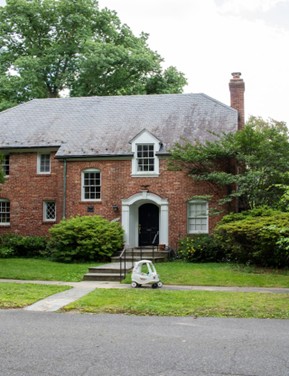
Your home’s exterior isn’t just a backdrop - it’s the first line of defense against harsh weather, airborne pollutants, and the wear and tear of daily life. It plays a crucial role in maintaining your property’s value and curb appeal. But as time passes, dust, mold, algae, pollen, and urban contaminants inevitably take their toll, dulling surfaces and even accelerating deterioration. Restoring that outer shine requires more than a basic rinse - it calls for a thoughtful approach rooted in science, material awareness, and environmentally conscious methods.
That’s where experienced professionals come in. Many power washing companies in Kansas City understand the balance between effective cleaning and long-term preservation. With a growing focus on eco-safe detergents and material-specific techniques, these services are helping homeowners clean smarter, not harder.
Before tackling exterior cleaning, it’s important to understand the types of materials involved. Each has unique properties and vulnerabilities that influence which tools and cleaning solutions are safe to use.
A popular, low-maintenance option, vinyl is durable but can warp under high heat or pressure. It’s prone to mold, mildew, and algae buildup in shaded or humid areas.
Wood is a natural material that breathes, absorbs moisture, and deteriorates over time. High-pressure cleaning can strip paint or damage softwood grain, so softer methods are preferred.
This textured surface is common in warmer climates but can be fragile. It’s porous, making it susceptible to moisture retention and algae growth.
Brick and mortar joints can be damaged by overly aggressive pressure washing. However, they respond well to soft washing with eco-safe agents.
Aluminum and steel are often used for gutters and trim. While tough, they can oxidize or dent under pressure and require pH-neutral cleaning agents to avoid corrosion.
Knowing what you’re working with helps guide tool selection, cleaning agents, and application methods for optimal and safe results.
Cleaning a home’s exterior isn’t a one-size-fits-all process. Professionals use a variety of tools designed for precision, safety, and effectiveness based on the surface type and soil level.
Soft washing uses water pressure typically under 500 PSI combined with specially formulated cleaning solutions. It’s ideal for:
Higher pressure washers (1,500–3,000 PSI) are used for tougher, more durable surfaces like concrete driveways, patios, and brick. They can quickly remove years of buildup but must be handled with care around siding or trim.
For areas where pressure washing isn’t ideal, extendable brushes allow for gentle scrubbing of soffits, windows, and intricate architectural details.
Specialized nozzles, scoopers, and even vacuum systems allow for safe and effective gutter clearing - helping prevent water damage and overflow issues.
Many modern systems allow for adjustable mixing of water and eco-friendly detergents to precisely match the needs of each job—minimizing waste and maximizing results.
One of the biggest concerns today’s homeowners have is the environmental impact of cleaning solutions. Harsh chemicals can:
Thankfully, advancements in chemistry have led to the development of biodegradable, plant-based detergents that break down naturally in the environment without sacrificing cleaning power.
Non-toxic and biodegradable: Breaks down into harmless substances after use.
Low-VOC (Volatile Organic Compounds): Reduces air pollution and respiratory risks.
Phosphate-free: Prevents harmful algae blooms in waterways.
pH balanced: Gentle on surfaces and less corrosive to fixtures and hardware.
Popular ingredients include citric acid (from citrus fruits), hydrogen peroxide (a mild disinfectant), and surfactants derived from coconut or corn oil.
Choosing a professional cleaner who uses these products or sourcing them yourself for DIY cleaning can align your home care routine with your eco-conscious values.

Mold, mildew, algae, and lichen are more than eyesores—they’re living organisms that feed on organic materials and moisture. If left untreated, they can:
Soft washing with eco-safe biocides kills these growths at the root level—ensuring they don’t return quickly. This microbial removal is especially important in humid, shaded environments or regions with heavy rainfall.
Regular, science-informed cleaning not only beautifies—it also extends the lifespan of your home’s most important components.
Removing grime and mildew prevents blistering, peeling, and fading—giving your exterior paint job several more years of life.
Keeping wood, stucco, and trim dry and clean helps prevent rot, cracking, and warping—common issues that lead to expensive repairs.
Removing mold and pollen from exterior walls helps reduce the number of allergens that make their way indoors.
Clean exterior surfaces reflect more light and heat, helping to regulate indoor temperatures and reduce HVAC strain in extreme weather.
If you choose to hire an exterior cleaning service, look for one that:
For DIYers, start small with eco-friendly detergents and a garden hose attachment or soft-bristle brush. Never use bleach-based products near plants or storm drains, and always test on an inconspicuous area first.
A clean home exterior does more than please the eye - it’s a science-backed approach to protecting your property, improving your health, and living in alignment with your values. With the right tools, knowledge, and eco-conscious solutions, you can maintain a home that’s not only beautiful but built to last.
Whether you’re preparing to sell, investing in long-term upkeep, or simply taking pride in your space, understanding the “why” and “how” behind exterior cleaning can transform a simple weekend chore into a powerful act of care for your home and the environment around it.